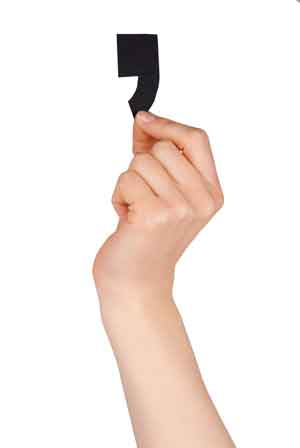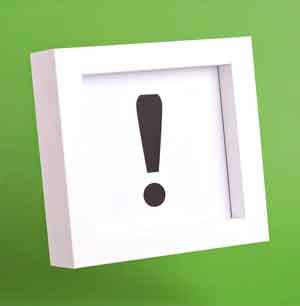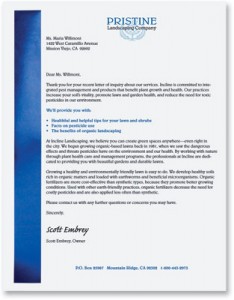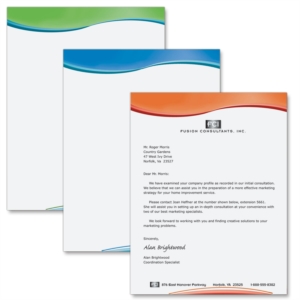Punctuation isn’t just about grammar—it’s about clarity, professionalism, and creating the right impression. In the business world, poorly punctuated letters can come off as sloppy or confusing. Whether you’re writing to a client, partner, or team member, the way you use commas, colons, and even exclamation points matters. This guide will walk you through the essential punctuation rules every professional should know when writing business letters—so your message is always polished and professional.
Salutation and Closing Punctuation Rules
Before you even get to the body of your letter, you have a choice to make about punctuation style. There are two main approaches for punctuating letters: mixed and open.
Mixed Punctuation
This is a more traditional and widely used style. It involves placing a comma after the salutation and another comma after the closing.
Example:
Dear Mr. Robert Edmunds,
Sincerely,
Open Punctuation
This modern, minimalist style omits punctuation after both the salutation and the closing. It creates a clean, open look on the page.
Example:
Dear Mr. Robert Edmunds
Sincerely
The most important rule is to choose one style and stick with it. Consistency is key to a professional appearance. If you’re unsure which to use, check your company’s brand tone, style guide, or traditions.

Body Text Punctuation Best Practices
The body of your letter is where your message takes shape, and correct punctuation ensures it’s understood exactly as you intend. Here are some best practices for common punctuation for letters.
Periods
A period signals the end of a thought. Use it to create clear, complete sentences. One modern convention to remember is to use only a single space after a period, not two. This is the standard for digital and print media today.
Commas

Commas are often tricky, but a few key rules will help you navigate them in business correspondence.
- Coordinating Conjunctions: Use a comma before a conjunction (like and, but, or) when you are joining two complete thoughts (independent clauses).
- Example: “We reviewed your proposal, and we’re ready to move forward.”
- The Oxford Comma: Also known as the serial comma, this is the comma used before the final conjunction in a list of three or more items. While its use can be a matter of style, it often adds clarity. Using it prevents ambiguity and ensures your meaning is clear.
- With the Oxford comma: “We’ll launch the campaign, analyze the results, and revise next quarter.”
- Without the Oxford comma: “We’ll launch the campaign, analyze the results and revise next quarter.”
To see why the Oxford comma is so helpful, consider this example:
- “We’re bringing hot dogs, macaroni, and cheese.” (Three separate items)
- “We’re bringing hot dogs, macaroni and cheese.” (This could be interpreted as two items: hot dogs and a dish called macaroni and cheese.)
Semicolons
Semicolons are perfect for connecting two closely related independent clauses without a conjunction. They suggest a stronger link between the two thoughts than a period would.
Example: “We appreciate your partnership; let’s connect again in January.”
Common Punctuation Marks & How to Use Them
Beyond the basics, several other punctuation marks play a role in professional writing. Knowing how to use them correctly will add another layer of polish to your business letters.
Colons
Use a colon to introduce a list, an explanation, or to emphasize a point that follows.
Example: “We need the following by Friday: your signed contract, logo files, and payment.”
Quotation Marks
Quotation marks are used to cite someone else’s words, indicate a direct quote, or highlight specific terms. Remember to follow the American English style, where periods and commas go inside the closing quotation mark.
Example: “Let’s move forward with the ‘Year-End Savings’ promotion.”
Apostrophes
Apostrophes have two main jobs: to show possession and to indicate contractions.
Example: “It’s been a great year for our company’s growth.”
A common mistake is confusing “its” and “it’s.”
- Its is possessive (e.g., “The company celebrated its success.”).
- It’s is a contraction of “it is” (e.g., “It’s time for our meeting.”).
Exclamation Points

In business writing, exclamation points should be used sparingly. They can add a touch of genuine enthusiasm, but overusing them can make your tone seem unprofessional or overly casual.
Example: “We’re excited to work with you!” is perfectly acceptable in the right context. Just don’t end every sentence with one.
Formatting Tips for Professional Business Letters
Proper punctuation for a letter goes hand-in-hand with clean formatting.
- Be Consistent: Maintain the same punctuation and alignment style throughout the document.
- Use Professional Spacing: The block format is a widely accepted standard. In this style, all text is aligned to the left, and there is no indentation for paragraphs. Use single spacing within paragraphs and double spacing between them.
- Proofread Diligently: Always reread your letter to catch any errors in punctuation and grammar. Reading it aloud can help you spot awkward phrasing or missing pauses.
- Add a Polished Finish: Don’t forget the visual impact. Using high-quality, branded letterhead reinforces your professionalism and makes your correspondence stand out.
Seal the Deal with Perfect Punctuation
Punctuation may seem like a small detail, but in business writing, it carries significant weight. The right punctuation builds trust, reinforces clarity, and maintains a professional tone. By mastering these simple rules—from periods and commas to colons and salutations—you’ll elevate every letter you send.
Once your letter is perfected, pair it with premium letterhead from PaperDirect to make a lasting impression that reflects your professionalism.



